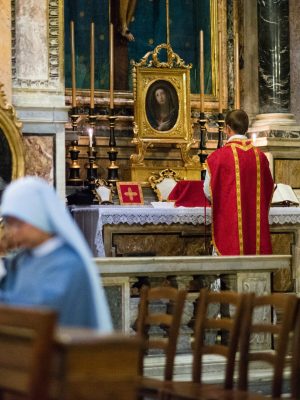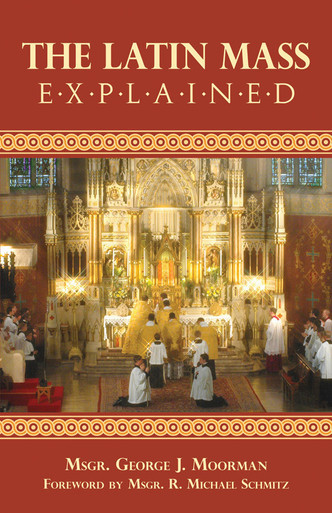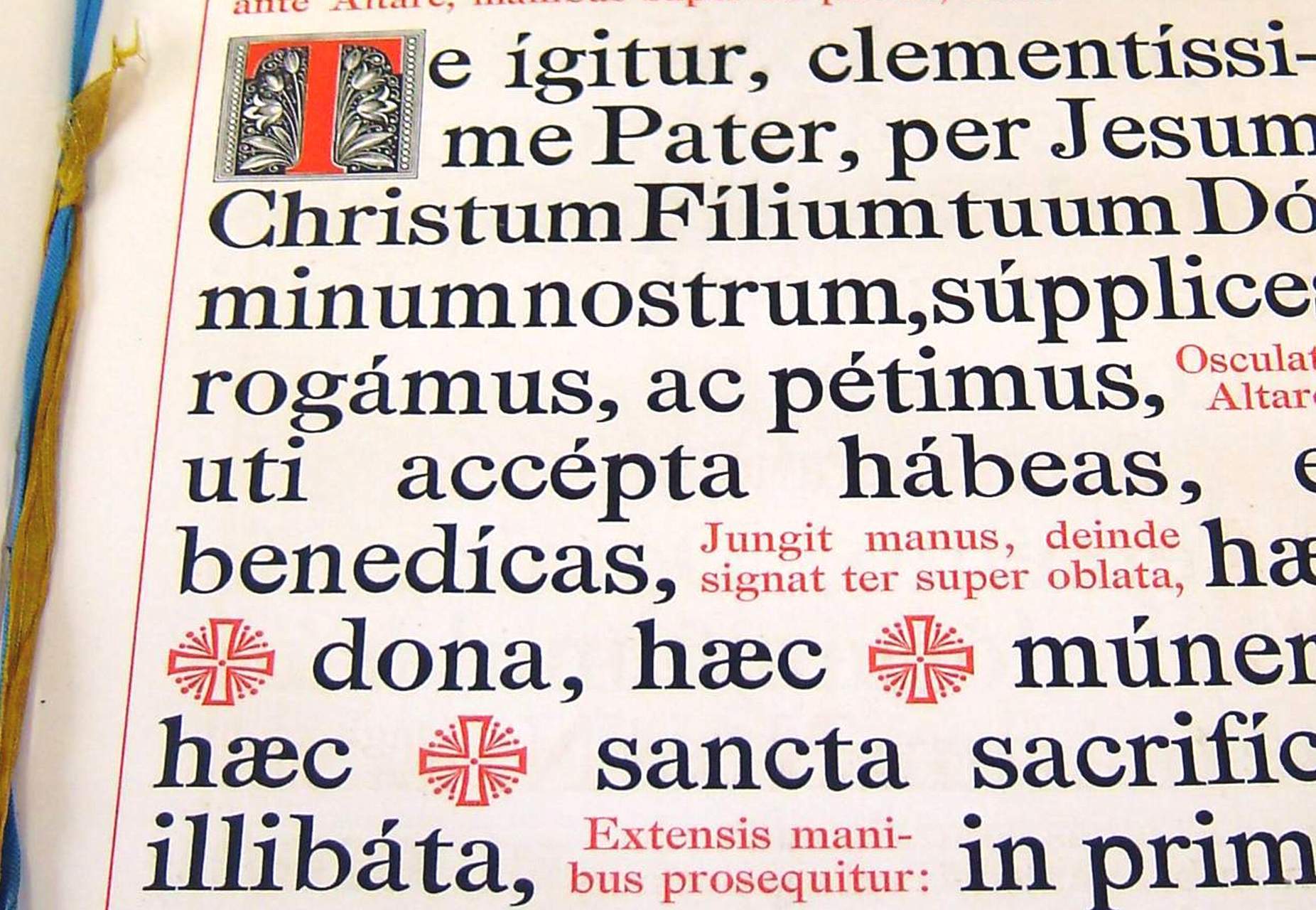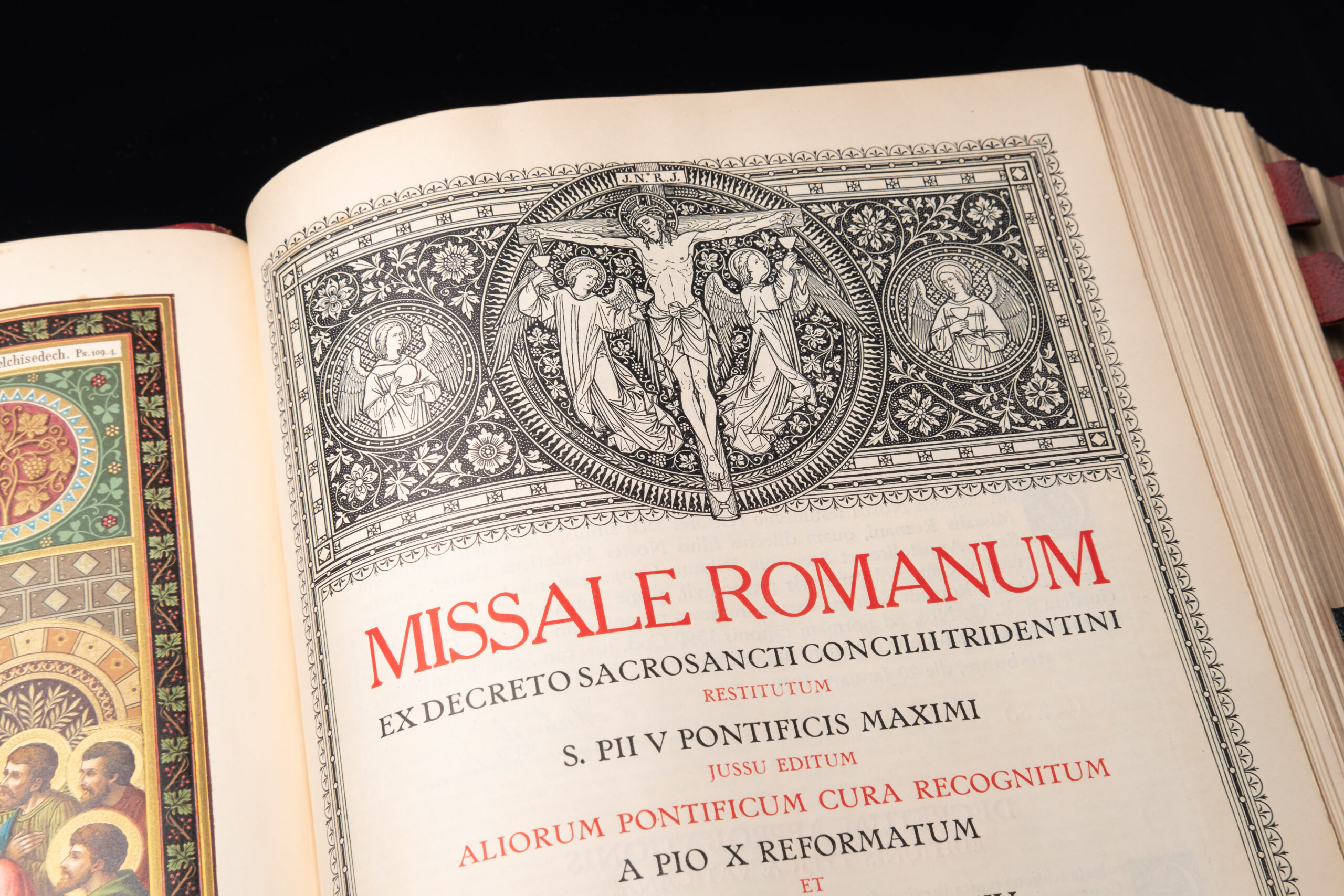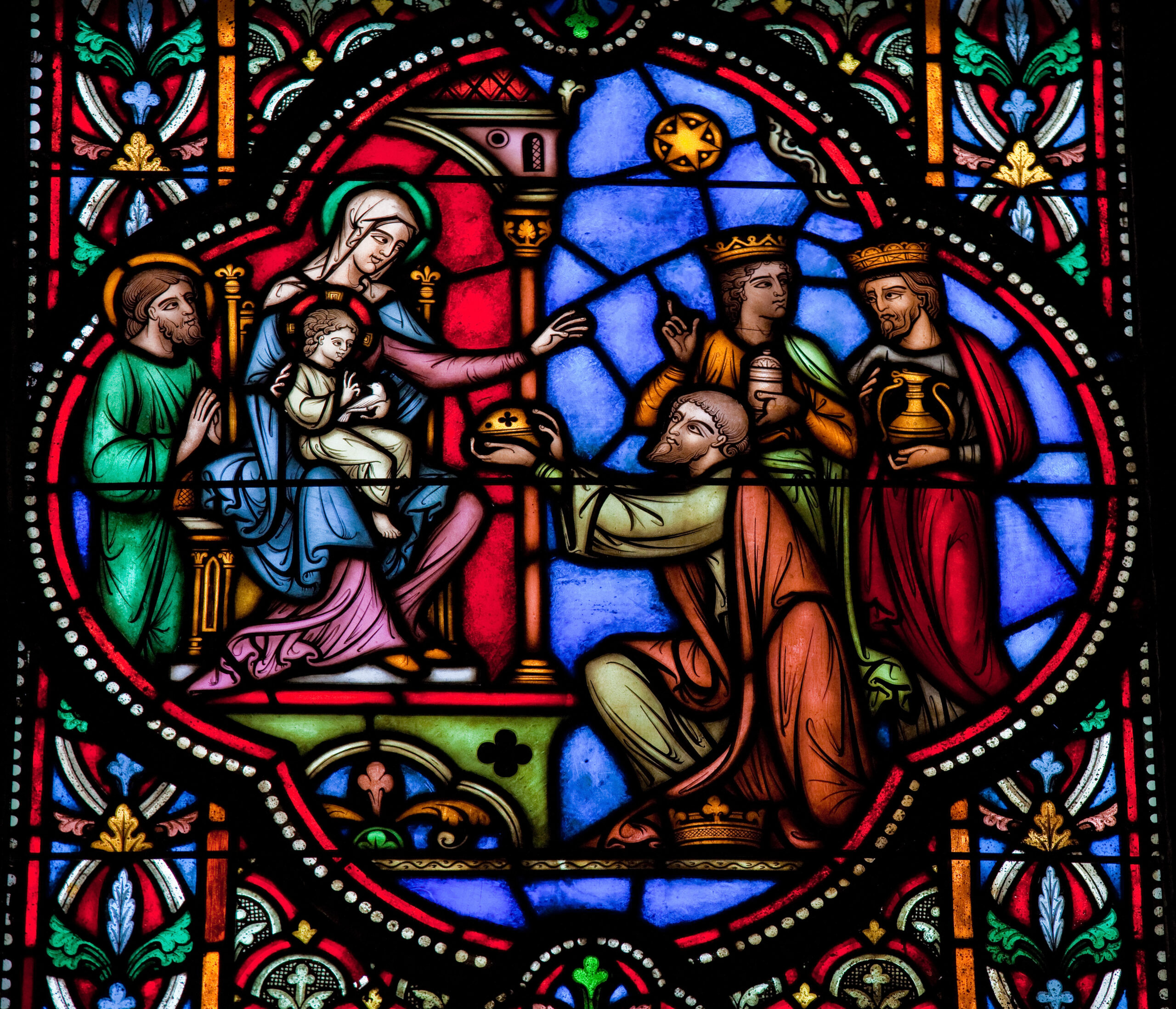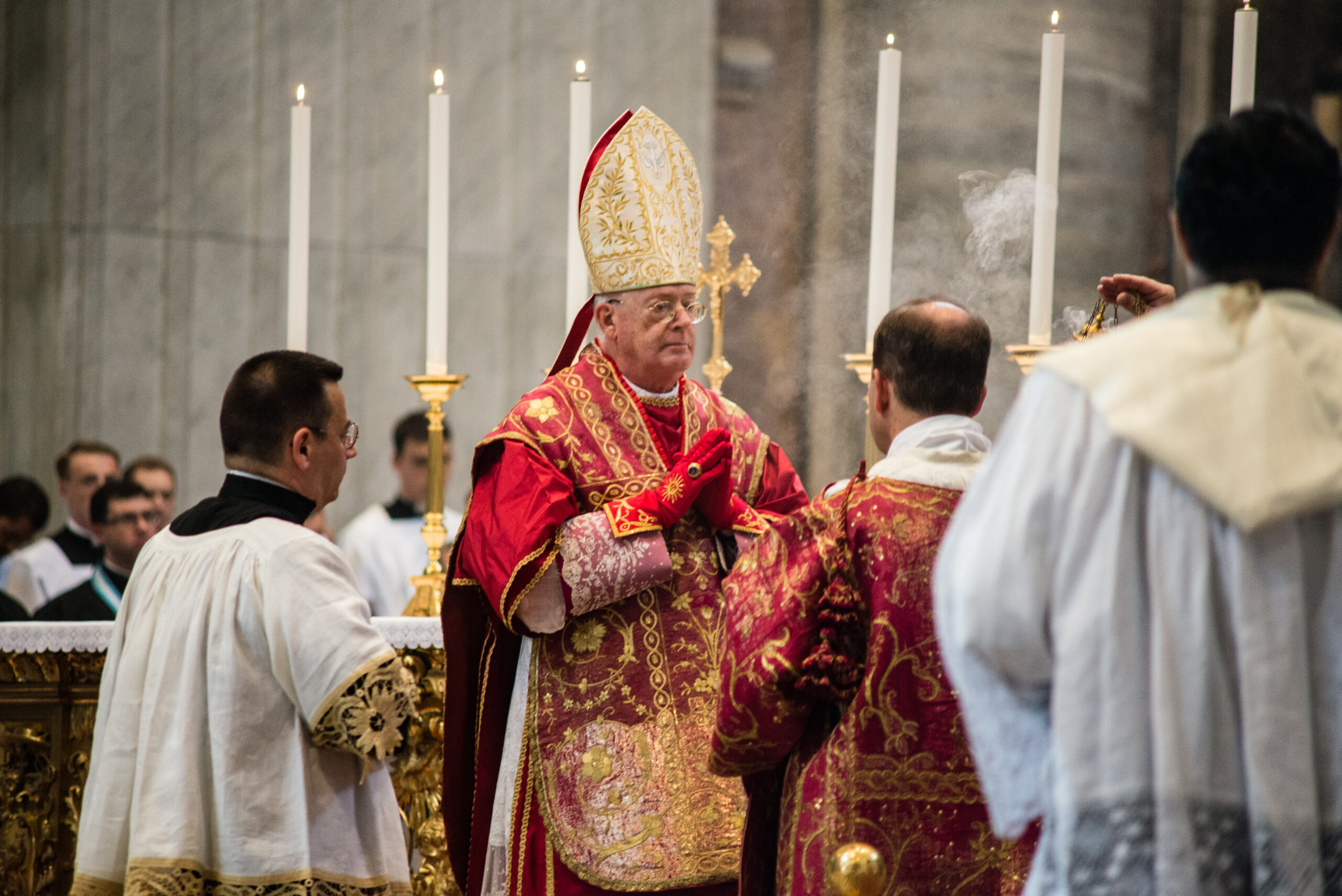“It is known, in fact, that the Latin liturgy of the Church in its various forms, in each century of the Christian era, has been a spur to the spiritual life of many saints, has reinforced many peoples in the virtue of religion and fecundated their piety.”
—Pope Benedict XVI
Mass is the highest act of religion and the highest prayer. It is the renewal and continuation of the sacrifice of Christ on Calvary. For Catholics, it is one of the most significant and important parts of their lives. It is Christ’s redeeming death on the cross continued and re-presented.
Sacrifice, since it is the highest act in religion, is most beautiful and beneficial to souls. In order that we may understand its great beauty and nobility, it is given to us mounted in an exquisite ceremonial.
The liturgy is like a diamond or gem that is mounted by a jeweler to protect it and bring out its beauty. The ceremonies and prayers of the Mass are like the mounting and setting to the diamond—they bring out the beauty of the Sacrifice.
The Liturgy Teaches
To help us understand and appreciate the Mass, the Church has wisely ornamented it over the centuries with ceremonies and symbols, actions and gestures, movements that tell a story to teach and reveal the sacred mysteries.
These signs and actions have developed organically through the centuries, and they help us to pray better. From a young age, Catholics learn when to sit and stand, bow and strike their breast. The liturgy is a teaching tool to help both priests and lay people to have a deep and fervent reverence reflective of ontological and metaphysical reality.
Man is made up of body and soul. The body and senses help the soul and mind pray and worship better. These signs and symbols and ceremonies impress the faithful and touch their hearts, fixing lasting thoughts and teaching truths.
The Council of Trent Speaks
Speaking of the impressive ceremonies of Mass, the Council of Trent states, “Since by reason of his nature man is so constituted that without exterior aid he can not easily rise to the contemplation of divine things, the Church, as a devoted mother, has therefore introduced into her liturgy certain usages, as, for example, that some portions of the Mass should be recited in a low tone, others in a loud tone of voice.”
It continues, “In like manner, certain ceremonies, for instance the blessings, the use of lights, incense, vestments and many things of that nature, she employs by Apostolic custom and tradition, in order both to manifest thereby the majesty of the great sacrifice, as well as to animate the minds of the faithful by these visible signs of religion and piety, to the consideration of the sublime mysteries hidden within this sacrifice” (Council of Trent, Sess. 22, c. 5).
This brings to mind a famous quote by Fr. Fredrick Faber, who wrote so well on the Blessed Eucharist. He wrote, “It [the Mass] is the most beautiful thing this side of heaven. . . . It came forth out of the grand mind of the Church and lifted us out of earth and out of self.”
The Latin Mass is For All
Consequently, through the generosity of the Church and pastoral solicitude of the Roman Pontiffs, present and future generations of the faithful should have free and large access to the fullness of the liturgical forms in the Latin Church.
After all, the Holy Spirit has created the Mass as an appropriate expression of the glorification that the whole Mystical Body of Christ owes constantly to the Holy Trinity—Father, Son, and Holy Spirit.
Providentially, therefore, and with a gesture of loving largesse after the example of the heavenly Father, the vicar of Christ Benedict XVI, in his munificence, granted motu proprio, of his own initiative, a decree that threw open once again the doors of the liturgical treasury of the Latin Church.
This decree Summorum Pontificum appealed to the wisdom and charity of the bishops to understand and implement his disposition, which was meant as a sign of reconciliation inside and outside the Church, promulgated in 2007.
In this intent, the decree has borne great fruit and received praise and recognition worldwide, making the beautiful ceremonies of the Roman rite available to all.
In the words of liturgical scholar Msgr. R. Michael Schmitz, “The liturgical richness of the Extraordinary Form of the Latin Rite shows in many ways that the sacramental mysteries instituted by Christ are a beginning of the eternal freedom and a glimpse of the glory of Heaven.”
He continues, “Hence, in these lands of shadow and sinfulness where human frailty finds a path to the light with great difficulty, Holy Mother Church, under the direction of continuous inspiration from above, has organically developed forms and details to guide our steps to a divine worship that guarantees our contact with the Godhead and at the same time elevates our soul and body to a genuine piety nourished by the grace of Christ.”
The Church has invited her priests and lay faithful to love and cherish the liturgy. The clergy especially must have a profound knowledge of the mysteries of which they are called to be the faithful ministers.
The laity, too, are called to deepen their knowledge about the theological and ceremonial meanings behind the sacred rites, glowing so brilliantly in the classical Roman rite.
An Excellent Book on the Latin Mass
Thus have many approved authors at different times and under various aspects taught and explained the liturgical expressions with great expertise. Among the more important was Msgr. George J. Moorman, who passed away in 1979. A native of Indiana, he was priest for more than seventy years.
Msgr. Moorman wrote an easy-to-read book in 1920 on the Mass called The Latin Mass Explained, republished by TAN Books in 2007. It explains the parts of the Mass with great care and attention, with special focus on the beauty and explanation of the acts and ceremonies of the rite. This book reveals the what, why, and how of the Traditional Latin Mass.
The book helps many understand for the first time the awesome dignity of the Mass with the rich spiritual significance of every element at the altar.
Today, knowledge of the Extraordinary Form of the Roman rite has spread and assisted in checking the lack of general liturgical formation among many Catholics of all ages. This prompted Pope Benedict to say in his motu proprio: “The use of the old Missal presupposes a certain degree of liturgical formation and some knowledge of the Latin language.” Neither of these is found very often. While many Catholics have a deep respect and are very much impressed with the Latin Mass, few have books on hand to teach them about what they already admire.


